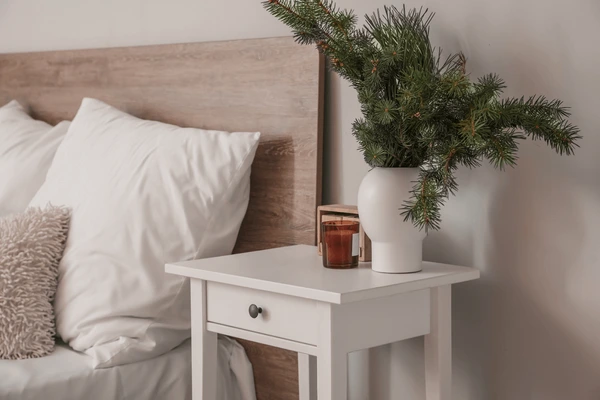
It takes more than just selecting a piece of furniture to go next to a bed to create the ideal bedside table. To guarantee that the table fulfills both functional and esthetic purposes in the bedroom, several variables must be carefully taken into account. A bedside table contributes significantly to the overall appearance and utility of a bedroom, serving as a surface for a light, a place to keep necessities or a decorative piece. Let us examine the key factors when choosing the perfect bedside tables.
Material Decisions
The longevity and design of a bedside table are greatly influenced by its materials. Common materials include wood, metal, and glass. For instance, wooden tables look well in both traditional and modern settings because of their ageless and adaptable charm. While metal and glass tables often offer an image of modern and sleekness, the other materials can add a bit of rustic appeal. Think about the material that most complements your style and the subject of the room.
Surface Area
The surface area of the bedside table is another crucial factor. It should have adequate room for necessities like a drink of water, books, an alarm clock, and a lamp. Make sure there is enough room on the table if you want to add other objects, like photo frames or ornamental pieces, to prevent crowding. A disorganized bedside table can be unsightly as well as useless.
Flexibility
Think about the potential uses for the bedside table. Some tables, for example, can be used as a tiny desk or as a spot to sit while putting on shoes. Look for a table with a flexible design, such as one that is easily movable or adjustable, if adaptability is important to you. This is especially useful in compact living areas where furniture frequently needs to be rearranged.
Material Sturdiness
Durability is an important factor to take into account, particularly if heavy objects or frequent use will be placed on the bedside table. Tables composed of cheaper materials might not endure as long as tables constructed of solid wood. Select a material that can survive regular use while taking into account the possible wear and tear the table may experience.
Simpleness of Upkeep
The bedside table should be easy to clean and maintain. Certain materials—like metal or glass—need to be cleaned more frequently because they might reveal dust and fingerprints more easily. Wood may need to be polished once in a while to keep its beauty. Choose a table whose finish complements your style of living and maintenance preferences.
Integration with Outdoor Furniture
Certain bedside tables are adaptable enough to be utilized in both indoor and outdoor settings. For instance, in some seasons a weatherproof table may be placed next to the bed and when further outdoor furniture is required, it could be relocated outdoors. Select a table that is both fashionable and robust enough for outdoor use if versatility is a need.
Cost about Quality
Although it could be alluring to go for a less expensive bedside table, it’s crucial to strike a balance between price and quality. Although a well-made table may initially cost more, it will probably endure longer and function better in the long run. When making a choice, take the investment’s long-term worth into account. To ensure that the table satisfies both functional and aesthetic objectives without going over budget, look for tables that offer good quality at a fair price.
Conclusion
Several considerations must be balanced when selecting the ideal bedside table, such as size, storage requirements, style, usefulness, longevity, and even compatibility with outdoor furniture. By giving careful thought to each of these factors, one can choose a bedside table that improves the visual attractiveness of the bedroom while also offering useful features. The perfect bedside table fulfills specific demands while adding to the general comfort and decor of the bedroom, regardless of whether storage, style, or sustainability are priorities.

